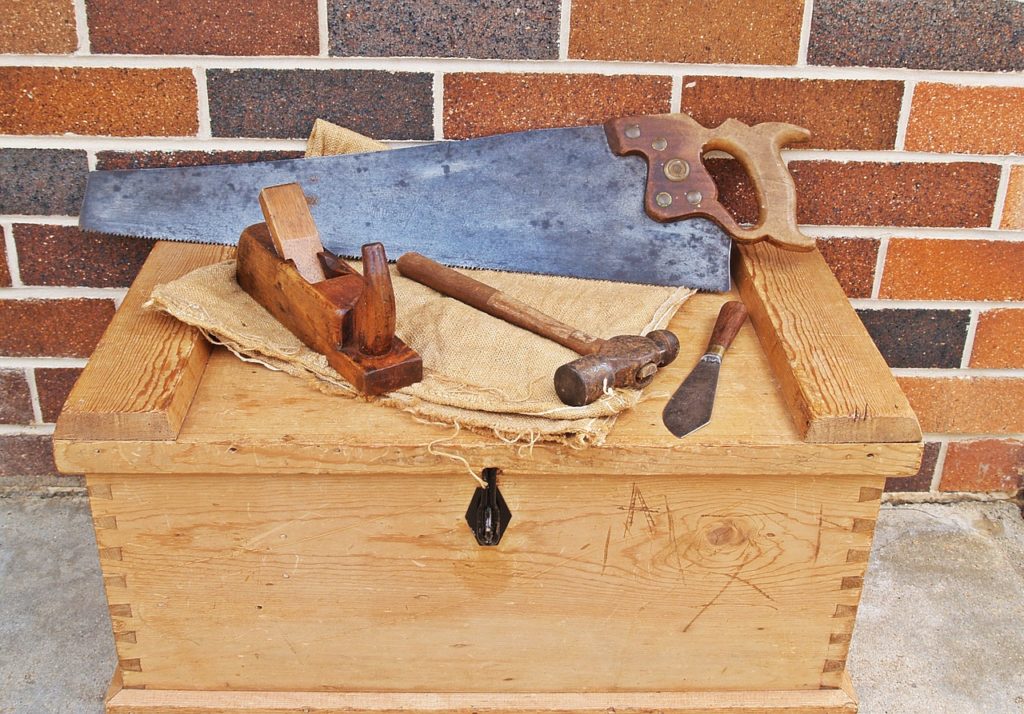Are you always digging around for the right tool? Hammers abound, but why are the flat-edge screwdrivers always missing? Wouldn’t it be great to have everything in an easy-to-find space?
I remember when me and my husband was doing our counselling before getting married (a requirement by the Church) and though I don’t remember anything else, I remember the pastor telling the women to learn how to use tools and not always to expect the men to be Mr. Fixit. (I don’t remember him telling the men to learn how to cook, too, but that’s beside the point, lol.). It’s a wonderful world of women’s liberation, so on top of being able to cook, and clean house, I have to learn how to replace broken bulbs, fix the pipes, or make a cabinet or two.
Anyway, before I launch into a tirade, the entire point is to learn how to organize your toolbox too!
Here are some steps and tips to get you on your way.
Step 1: Inventory.
First, start by gathering all your tools. Make a list of the locations where you found your tools. Garage, kitchen, basement, car, truck? Lay them all out on a bedsheet or blanket. Sort them by type to get an idea of how many different kinds of tools you have.
Next, examine each tool and decide what to keep.
• Is it a duplicate? If so, how many of this tool do I need?
• Have I ever used it? Some tools passed down thru the family should be kept for sentimental reasons, but others that you’ve never used can surely go.
• Is it broken? If it isn’t usable and can’t be repaired then discard it.
• Have I replaced it with a multi-purpose tool that does the job more efficiently?
• Does a neighbor have a better version that I usually borrow?
Toss out the broken tools, sell the good ones on OLX, donating to a local charitable organization, have a “yard sale for women” or help a favorite niece begin their first tool box. Only keep the tools you are sure to use in the future. <<<<IMPORTANT!
Step 2: Make a Plan.
Using your list of locations from step 1, think about how and where you use your tools. You may decide to centralize your tools in the garage or basement. Begin sorting your tool collection into groups according to their desired location. This will help you to determine the storage space requirements for each area.
Step 3: Choose your Tool Storage System.
The internet is a great tool for finding the latest tool storage solutions. Portable tool boxes are great for on-the-go types to keep in their car or truck. If you have a ton of small parts, you may consider some plastic storage cabinets with sliding drawers. Pegboards work nicely in the garage or basement workspace to keep tools handy and off the countertops. Maybe you need some new shelving to store larger-sized tools. A pallet box will do nicely too!
Step 4: Implement your new Tool Storage System.
If you’ve ordered a new tool box or some other item, then when it arrives begin to place your tools in order. Once you’ve got everything in its place, remember to always take the extra time to put items away when they are done being used. If you’ve added a pegboard, consider drawing an outline around each tool as it hangs on the pegboard to make it easier to know where to return the tool.

Step 5: Record them on Evernote.
If you are a follower of this blog, you know I can’t shut up about Evernote. It’s the modern mom’s tool against disorganization and forgetfulness. No matter how diligent you’ve been at Steps 1-4, chances are, you’ll still forget where something is. No one’s blaming you. Perhaps, it’s been years since you last used that screwdriver! Take out your handy dandy smartphone, take a picture of your tool, along with a view or clue on where to find it and store it in a folder called Toolbox. If you’re ever wanting -or needing to use something, just take out your Evernote to search for it! Handy, huh?
Get motivated—you’ll be glad you did. Once you’re organized, maybe you’ll even have space to buy some new tools! Hah! As if…
What, you dont have Evernote yet? Click this link to sign up pronto!

